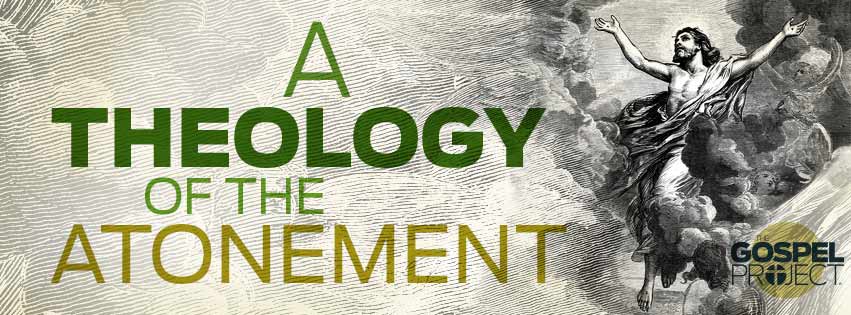This spring’s Gospel Project for Adults and Students will lead participants through the “Atonement Thread,” which helps people put the Bible together to see how the theme of atonement runs from Genesis to Revelation.
For the past several Thursdays, I’ve featured contributions from some friends who are examining the beauty of the atonement from different angles. We began with Brandon Smith, who wrote about the mysterious beauty of penal substitution. Nancy Guthrie pointed us to the story of Hosea and Gomer to help us understand the beauty of redemption. Last week, Jared Wilson showed us what it means to say that Christ is our ransom. Today, Matt Capps shows us how the atonement is meant to influence us.
Matt Capps (@mattcapps) serves as the Brand Manager and Strategist for The Gospel Project at LifeWay Christian Resources in Nashville, TN. Matt is an ordained Baptist minister, and is currently finishing his D.Min. at Gordon-Conwell Theological Seminary. He is proud to be Laura’s husband and Solomon’s daddy.
The Moral Influence of the Atonement
Discussions concerning the atoning work of Christ have, for the most part, been relegated to the purpose and extent of Christ’s sacrifice, and rightly so. After all, our evangelical faith holds this doctrine of penal substitution at the center of what we believe about the atoning work of Christ (1 Cor. 15:3; 2 Cor. 5:21; Col. 2:14).
Even so, there is another aspect of the atonement of Christ often overshadowed by our wonderfully cross-centered theology. If we are seeking a truly comprehensive and robust survey of that wonderful cross, the moral influence of the cross is a necessary companion to the atonement conversation.
The Cross Moves Us
When I survey the wondrous cross
On which the Prince of Glory died,
My richest gain I count but loss,
…And pour contempt on all my pride.
Love so amazing, so divine,
Demands my soul, my life, my all.
This portion of Isaac Watt’s 1700’s hymn “When I Survey the Wondrous Cross” has regained popularity in recent years and illustrates this doctrine well. The words focus on the emotive effect of the cross on the observer. Before we go any further, it may be prudent to address a few concerns many of you may have already begun to consider.
1. Does the theory of the moral influence of atonement necessarily lead to legalism?
No, and we must be careful not to react legalistically to anything that holds Christ up as an example. As John Stott reminds us, the way to holiness is not by imitation of Christ, but through union with Christ.
How do we express union with Christ? We would all acknowledge that to some degree, worshipping the Lord through a holy lifestyle is a part of that equation, especially if we take seriously Paul’s words in Romans 12:1-2.
2. Isn’t the moral influence theory of the atonement the bastion of mainline liberal theology?
Well, it is, unless the moral influence of the cross is rooted in the purpose of the atonement. Leon Morris has rightly argued that by itself the moral example of the cross is inadequate, but this does not render it untrue. In every instance where Christ’s death is presented as an example to be followed, one can also find his substitutionary sacrifice as the foundation and motivation for that example close by. We cannot disconnect the two.
The Bible teaches that the sacrifice of Jesus not only provides salvation, but also impels us towards sanctification, inspiring us to reflect God’s love to others (2 Cor. 5:14, Rom. 8:35-39).
Did Jesus not tell His disciples that the greatest display of love is found in laying down one’s life for his friends (John 15:13)? The motivating power of His sacrifice is seen on the cross. Jesus’ obedience to God and His petition that God would forgive those who crucified Him moved one of the criminals on the cross beside him to believe (Luke 23:39-43; Mark 15:39).
Likewise, Paul argues that the death of Christ not only provides the way of salvation, but also provides the supreme demonstration of love (Rom. 5:8). For this reason, he called the church to imitate Jesus’ love and compassion and adopt an attitude of unselfish concern for others (Eph. 5:1-2; Phil. 2:3-8).
Peter also exhorted the church: “For to this you have been called, because Christ also suffered for you, leaving you an example, so that you might follow in his steps (1 Peter 2:21).” Christ serves as the example of love and perseverance for the church when they suffer unjustly.
The Supreme Example
Jesus Christ is the supreme model of Christian discipleship, the ethical exemplar of the Christian life (1 Cor. 11:1; Heb. 12:2). The compelling force of Christ’s sacrificial example is one answer to indifference and inaction in our broken world. Once we truly grasp what Christ did on our behalf, we will be compelled to live our lives in a way that reflects his self-sacrifice for all others (2 Cor. 5:14).
The cross of Christ not only atones for sin; it also provides a gripping vision that demands our souls, our lives, and our all.



















